From its ancient monasteries to soaring mountains, Nepal is a treasure trove of natural and cultural attractions.
NEPAL
Nepal is a trekker’s paradise, a country of mountains and high passes. The Himalayas run along the northern border, jagged glacial peaks that are swathed in cloud some days, and shine luminous white on others. Intrepid explorers have been attempting to climb to the summit of Mount Everest for a century. But there are also lots of more accessible hiking trails in the Himalayan foothills and the Annapurnas, where you’ll pass Sherpa villages and monasteries, glacial lakes and welcoming lodges.
The Himalayan mountains are a playground for adventure seekers. Bungee jump into a vertiginous gorge; kayak or raft down an icy river. Paragliding and mountain biking are also popular activities, the dramatic mountain scenery making the experience even more memorable.
Although Nepal is known for its mountains, it has a lot of geographical diversity. Within this small country you can travel from the polar cold of the Himalayas to the tropical warmth of its lowlands. South of the mountains you’ll discover grassy plains and rolling hills, paddy fields and verdant forests. There are 20 protected areas, including 10 national parks – the oldest, Chitwan National Park, is home to the elusive Bengal tiger.
But Nepal doesn’t just appeal to nature lovers. It has some fantastic cultural offerings, from markets and temples to museums and monasteries. The city of Patan is renowned for its iconic Durbar Square, bordered by an ancient royal palace and a visually stunning complex of Newari-style temples. Meanwhile, Mayadevi Temple, in the town of Lumbini, is recognised as being the birthplace of the Buddha. Across the country you’ll find ornate Hindu temples and Buddhist stupas surrounded by colourful prayer flags.
Nepalese food is another treat for tourists. Momos are steamed dumplings served with a variety of different vegetable and meat fillings, and served with chili and garlic dipping sauce. Thukpa is a hearty, spicy noodle soup, often topped with meat such as yak or goat.
Sel roti – a ring-shaped crispy, sweetened rice flour bread – is a tasty sweet snack.
All in all, a trip to Nepal is one of intriguing contrasts. You have the chance to learn more about a fascinating culture, while taking in the mountain views.
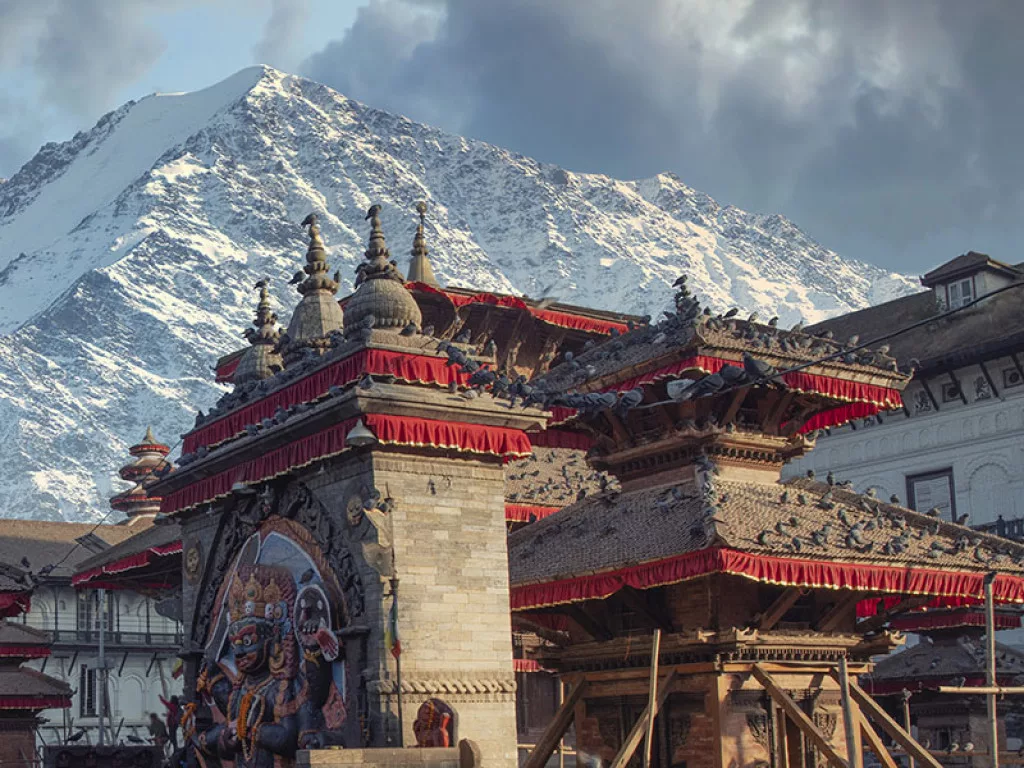
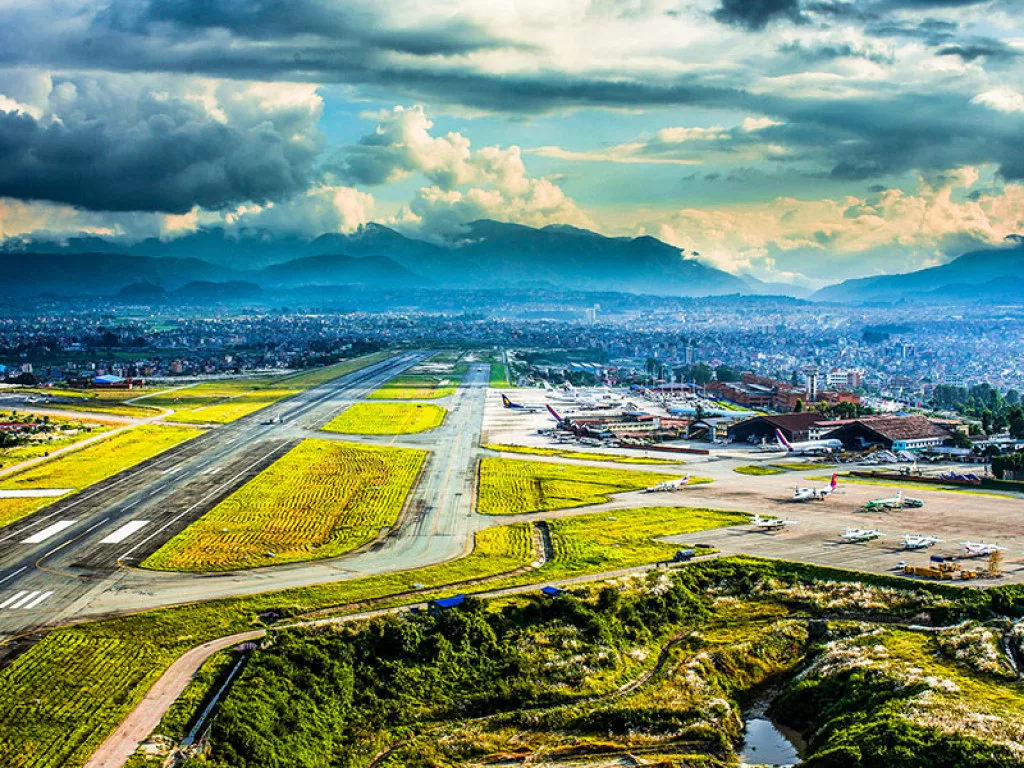
TOURISM INSIGHTS: NEPAL TOURISM BOARD (NTB)
Nepal Tourism Board (NTB) is the national tourism organisation of Nepal. It was established by the Government of Nepal in 1999 on behalf of the public and private sector, with a goal of promoting Nepal as a holiday destination to international tourists.
We spoke to Dr Dhananjay Regmi, CEO of NTB, about Nepal’s unique landmarks and the mammoth task of post-COVID recovery.
What are your organisation’s current goals?
Dr Dhananjay Regmi (DR): The current goal of the organisation is to sustain itself through the COVID-19 crisis that has ailed the global tourism industry. We have the huge task of tourism recovery after the crisis.
Nepal’s tourism industry was doing very well with significant growth in the last few years. With the global pandemic, tourist arrivals have reached a complete halt. In the near future, our goal will be to put all promotional efforts into reaching back and surpassing the earlier figures of tourist arrivals through practice and promotion of sustainable and responsible tourism.
How do you market Nepal as a destination?
DR: Our marketing is a mix of traditional and contemporary methods which have been tried and tested. For now our focus is on digital marketing and promotion to reach the potential visitors and Nepal lovers all over the world. We want to inspire our online audience to visit Nepal through continuous supply of positive, vibrant and relatable human stories and content which can be found in abundance in our little Himalayan country.
We are also looking into digital campaigns and collaborations to engage users and content creators. We also plan on working closely with the private sector and linking them to their international counterparts through a sophisticated and updated digital platform.
How has COVID-19 affected tourism in Nepal, and what has NTB done to help local tourism businesses?
DR: Nepal’s tourism came to an almost complete standstill in the immediate aftermath of the COVID-19 pandemic. With billions of people around the world in lockdown, the flow of goods and people has been severed and economic activities have been stalled.
While no official data exists, the informal sector associated with tourism and travel is large.
About five million jobs are said to be associated with tourism, out of which as many as 40 percent might have lost their jobs, mostly daily wage workers, porters and trekking and tour guides. Hotels, airlines and transportation companies were all without work for many months. Therefore, the revenue generated by tourism has been almost nil.
NTB has been working consistently to facilitate the tourism industry through constant communication with the private sector from Kathmandu as well as different parts of the country. We have also been working with the line ministry to address the concerns of the private sector.
From facilitating the rescue of tourists in different parts of Nepal during the initial lockdown to developing the health and hygiene protocol for industry reference for recovery; from working with international partners to start programmes for livelihood recovery for tourism manpower, and lobbying for friendly policies for domestic tourism, NTB has ensured that every effort has been made to help and facilitate the growth of local tourism.
We are developing and diversifying our products and promoting them digitally through a steady supply of positive stories and rich content.
Are there any interesting projects in the pipeline you wish to highlight?
DR: We have many interesting projects for product development and diversification that will be implemented soon. While we will be working on upgrading the well-frequented tourism destinations and products, we are also looking toward identifying new products from every province and every region.
We have developed the concept of ‘east to west’ tourism, where a tourist is able to experience every aspect of Nepal, natural and cultural. Similarly, we want to develop new cultural trails along the hills of Nepal in the middle of the country, encouraging repeat visitors to try new routes and experience authentic cultures all across the country.
Through a sustainable and community-based approach towards product development and responsible tourism in implementation, we are positive that we will be marching towards progressive tourism that will help the economies of the local communities as well as the country.
Why, in your opinion, should someone visit Nepal?
DR: We have the highest mountains in the world, some of the most exotic cultures and festivals, and a varied range of biodiversity. We are known as the Land of Mount Everest and the Birthplace of Lord Buddha. To a traveller from the west, a visit to Nepal is an enriching and enlightening experience, considering the novelty of the experience here in contrast to what a normal tourist destination offers.
In this age and time, most travellers are looking for meaningful experiences and Nepal, I believe, offers just that. We also offer a holistic wellness experience with activities which require physical activity, patience and commitment; a perspective on life through interactions with our resilient and forever appreciative Nepali humour; and deeply healing experiences that take one back in time. Visiting Nepal is a lifetime experience. That is why a tourist should visit Nepal.
What are some of the country’s most unique landmarks?
DR: Nepal is home to nearly one-third of the approximately 2,400-mile long Himalayan range including the highest of them, Mt. Everest, the tallest mountains in the world. Eight of the 14 highest peaks in the world are in Nepal. The 1700-kilometre Great Himalaya Trail, or GHT, is the longest and highest alpine trekking trail, and it connects the two ends of the country via a breathtaking route.
Similarly, Lumbini in Rupandehi, Nepal, is visited by thousands of pilgrims from all over the world as the Birthplace of the Buddha. The Mayadevi Temple where the Buddha is believed to have been born is a UNESCO Cultural Heritage Site.
Then we have Kathmandu for a peek into the microcosm of Nepal. It is a city steeped in Newari culture and heritage, and bearing the legacy of the administrators of Nepal through centuries. Kathmandu Valley is also a UNESCO Cultural Heritage Site, with seven such sites within a radius of 20 km.
Similarly, Pokhara is a popular tourist city with its quaint and calm ambience, offering a relaxing holiday experience. It is also gateway to the Annapurna Circuit, often termed as one of the best trekking routes in the world.
We have another UNESCO World Heritage Site in the ‘natural’ category, and that is Chitwan, which is teeming with wildlife and unique animals native to only this part of the world. Janakpur – believed to be the birthplace of Sita from the Ramayana – is another city offering a colourful and unique Terai experience.
Nepal is a treasure trove of natural heritage, with 20 protected areas covering almost 24 percent of its land compared to the global average of 11 percent. There are 12 national parks, one wildlife reserve, six conservation areas, one hunting reserve, and 13 buffer zone areas covering various geographical locations, from the sub-tropical jungles of the Terai to the Arctic conditions of the Everest region.
Are you optimistic about the future of the tourism industry in Nepal in 2021?
DR: We are definitely optimistic and hopeful for 2021. With the recent announcement that vaccines could be available by early 2021, we are looking forward to a surge from our market segment in the west.
We are already receiving many queries from adventure lovers all over the world who want to know when Nepal will be open for tourists. We are already partially open for trekking and expeditions, and we are also working on opening for tourism with priority on safety of tourists and Nepali people.
Similarly, we are also working on facilitating the entry procedures to make it easy for our visitors and the travel industry.
In 2021, we will be working closely on different markets through targeted programmes and campaigns on site and online. I’m also positive that our dynamic tourism industry will be able to sustain and recover quickly, as we have done in the past. And we plan to promote in more innovative ways to create new products and packages.
In the changed context within the country, we are going to reach out more locally at state level and more internationally at central level. In about three-five years’ time we hope to be talking about NTB’s success story of transition into a federal structure and its modus operandi then. By this time, I’m positive that we will also be talking about Nepal’s position as a top tourism destination in the world.
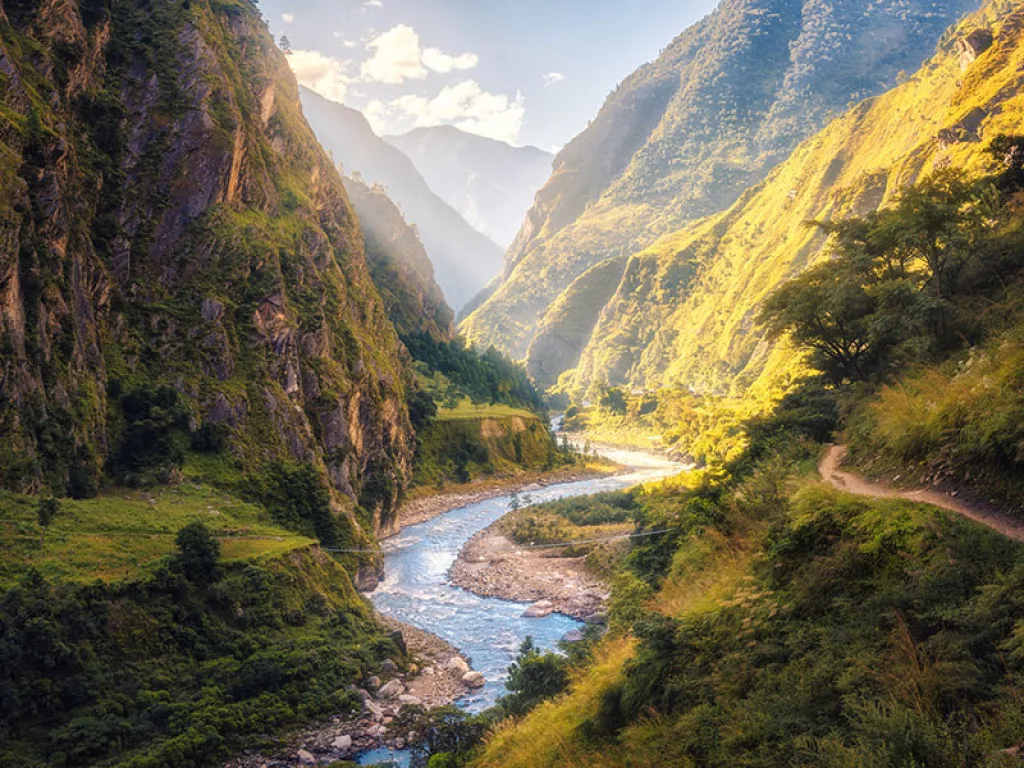
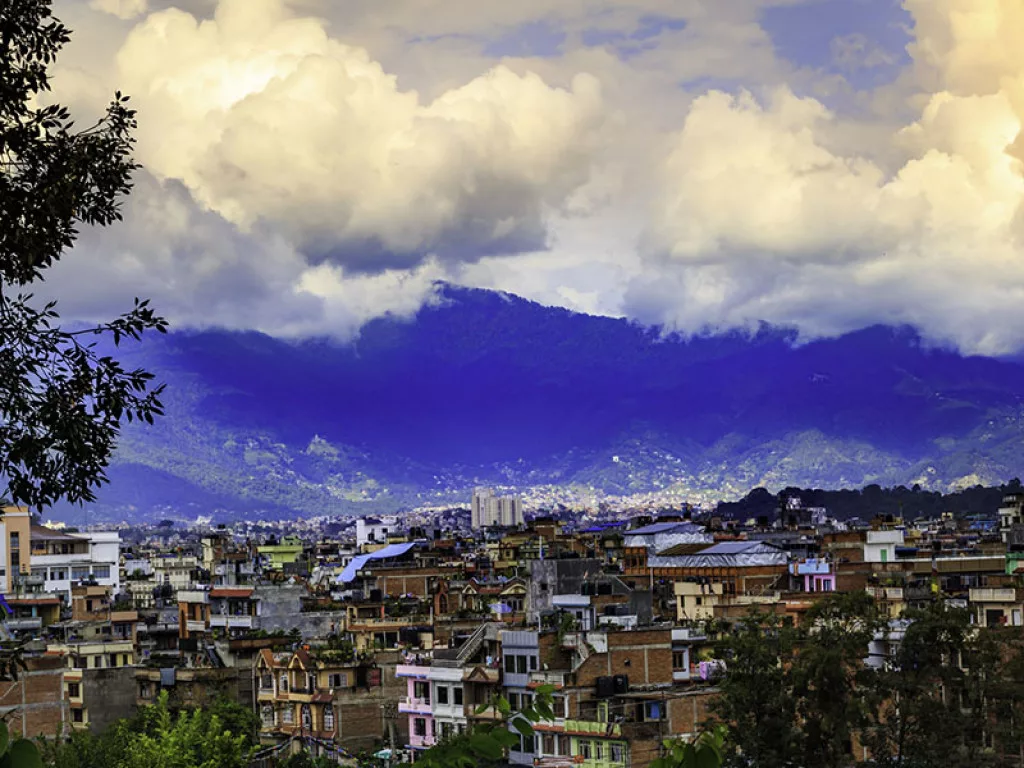
OUTLOOK RECOMMENDS
EAT:
For traditional Nepali cuisine in Kathmandu…
For European fine dining with a Nepali twist…
SLEEP:
For an upscale eco-boutique retreat…
For timeless luxury in Kathmandu…
DO:
For licensed trekking in the beautiful Himalayas…
For motorbike tours through unforgettable landscapes…
Nepal Motorbike Tour is one of the leading operators for motorbike excursions in Nepal. With its high quality bikes and professional mechanics and guides in attendance on every trip, you can be assured of a seamless experience. Tours last from 7 to 14 days, and will take you through some of the most dramatic landscapes in the country.
FOCUS ON KATHMANDU
Kathmandu, Nepal’s capital, is a riot for the senses. The traffic-jammed streets convey a chaotic impression, but this is also a city of hidden beauties and fascinating cultural attractions.
Enjoy a tranquil early morning walk to Swayambhunath, an ancient Buddhist stupa surrounded by statues and temples. The Garden of Dreams is a serene public garden in the backpacker district of Thamel.
Pulchowk Road is a great place to purchase souvenirs, with market stalls and multi-story shops selling pottery, hand-printed fabric, homemade jewellery and much more. The nearby Kupondole area is known for its vibrant street art, although you’ll find colourful murals all around the city.
From Pulchowk you can walk or take a taxi to Durbar Square, where you’ll find historic temples and palaces. While several were destroyed in Nepal’s 2015 earthquake, the square still lives up to its UNESCO designation.
Exploring the city’s labyrinthine backstreets you’ll find hidden temples, courtyards spread with drying chilies, artisan workshops and delicious hawker stalls.
Although the city might be popular with backpackers, it has a lot of luxury offerings for the upmarket traveller. You’ll have your pick of upmarket hotels, from multinational chains to smaller boutique offerings. Kathmandu also has some interesting upscale restaurants, serving food from around the world, as well as delicious variants of Nepali cuisine.
LANDMARK ATTRACTIONS
Mount Everest
This mountain needs no introduction – at 8,848 metres, it is the tallest in the world, and has captured the imagination of mountaineers for over a century. While climbing to the summit is a dangerous endeavour, suitable only for those who have undergone intensive training, many tourists visit Everest Base camp for a glimpse of the peak. Hire a guide and take an excursion through the foothills, passing colourful prayer flags and Sherpa monasteries on the way.
Lumbini
This UNESCO-designated pilgrimage site is known to be the birthplace of Lord Buddha, who was born in Lumbini, on the Terai Plains, in 623 BC. The site consists of a number of older temples – such as the Mayadevi Temple – as well as newer ones built by Buddhists over the years. There are monuments, monasteries and museum to learn more about the Buddha. You can also visit the Puskarini, or Holy Pond, where Buddha had his first bath.
Chitwan National Park
This is one of the best places in Nepal to come wildlife spotting. Located in the Terai lowlands, its dense forests, grassy plains and network of rivers are a stark contrast to the popular Himalayan region. Visitors to the park have a chance to see rhinos, sloth bears, deer, gangetic dolphins and even the elusive Bengal tiger.
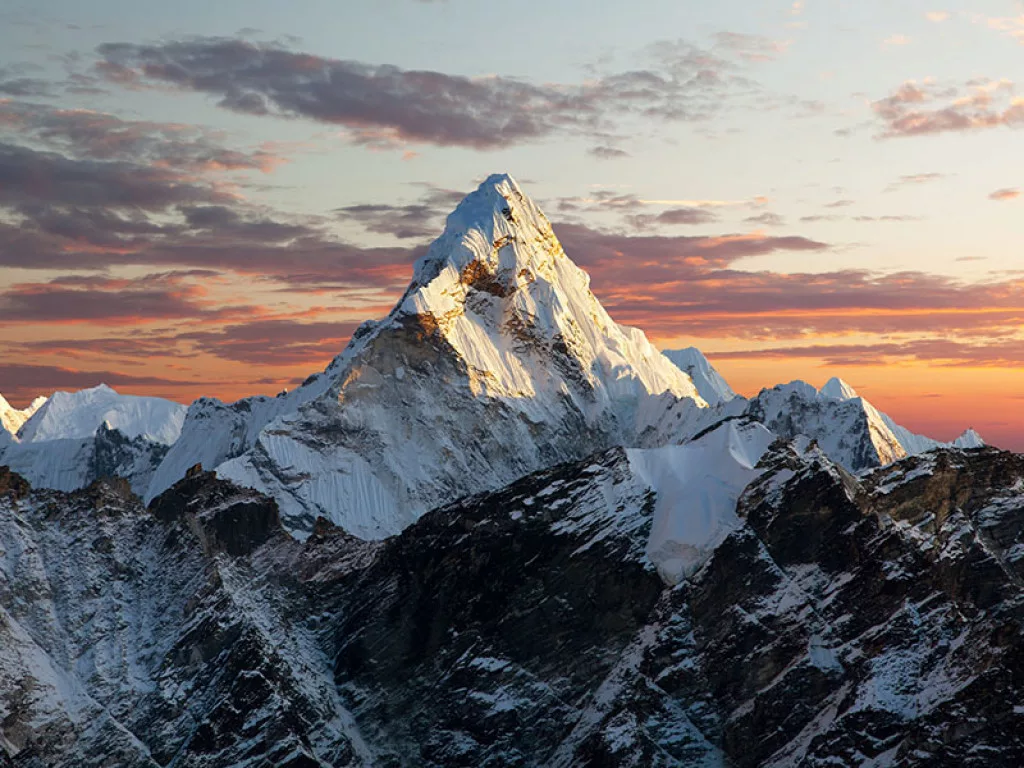
GETTING THERE AND AROUND
Tribhuvan International Airport, in Kathmandu, is the country’s only international airport. It offers flights to 40 destinations in 17 countries across Asia and the Middle East, and functions as a hub for two international carriers, Nepal Airlines and Himalaya Airlines.
However, three other international airports are being constructed in the country – Pokhara International Airport, Gautum Buddha International Airport and Nijgadh International Airport, meaning the country will become increasingly accessible to tourists.
Nepal has a good network of domestic airports and airlines – many travellers prefer to navigate the country by air. These include Pokhara, Nepalaganj and Biratnagar. Jomsom Airport is one of the most dangerous airports in the world, located at an elevation of 8,900 feet, with an airstrip that’s only 66 feet wide! Although there is a schedule of frequent flights, temperamental mountain weather can sometimes cause delays.
Public transport in Nepal is very affordable, although roads can be narrow, winding and poorly maintained – make sure to account for delays to your journey in your itinerary.
Tourist buses are comfortable and often air-conditioned, while local minibuses are quicker, but often overcrowded.
When navigating larger cities, such as Kathmandu, your best bet is to take a rickshaw or a taxi, which are quicker and more comfortable than the public buses.






















